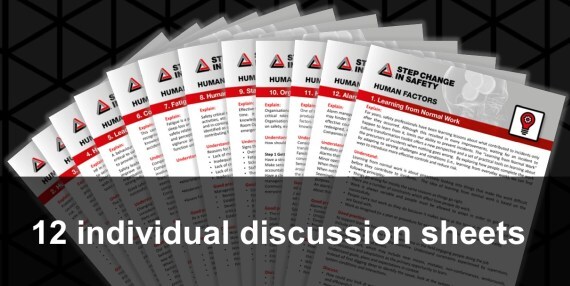Companies in the oil & gas industry require a workforce capable of undertaking process and technical operations, supplemented by other disciplines such as welfare and catering, necessary to support safe operations and emergency response arrangements.
Effective staffing is all about having the right number of people, in the right place at the right time. It is not just a matter of having enough staff, but also ensuring that they have suitable knowledge, skill and experience to operate safely. Staffing levels are closely related to several other topics, such as workload, organisational change, safety critical task analysis (SCTA), supervision, competence, human-machine interface design and fatigue.
Having clear data on staffing levels is important when considering, or undergoing, organisational change as reduced staffing levels may impact the management of major accident hazards.
Requirements for staffing levels are primarily focused at ensuring there are sufficient numbers of trained personnel to deal with emergency situations. However, it is also vital to ensure there are enough personnel to safely operate, maintain and support safe operations.
To comply with regulatory requirements, manning levels at major hazard sites should be determined at design phase and relate to the nature of operations and type of process equipment in use. Specific in-depth analysis should be carried out for Central Control Rooms (CCR) and other critical areas.
A manning assessment may help to identify the personnel requirements for emergencies and safety-critical work scopes to ensure sufficient numbers of personnel are available to allow continued safe operation of the asset. Manning assessments should also consider different operational modes, i.e. shutdown, as well as welfare requirements.
As an example, manning levels for an offshore installation should include (but are not limited to):
- Management of the installation
- Supervision
- Emergency response team members
- Responsible Electrical Person
- Medic and First Aider
- Disciplines for conducting safety critical tasks
- Welfare (i.e. catering crew)
- Safety Reps
- Disciplines for effect conduct of control of work.
- Safety critical maintenance
Identifying the right levels of staffing for operations, and any necessary contingencies, ensures sufficient numbers of key personnel are suitably trained and competent.
Any changes to the staffing levels should be risk assessed and provide clear mitigations for any reduction. Variations can arise from changes to work activity, down manning, holidays, sickness, attending training courses, people leaving and new people who may not have attained the requisite competence levels to fulfil their role.
Some indicators that staffing levels may be impacted are work overload (i.e. increased error rates), high levels of fatigue (swing shifts and additional hours logged) and employees being required to cover other positions.

Human Factors Resources
Browse and download a range of resources related to Human Factors.
MESSAGE FROM STEP CHANGE IN SAFETY - HUMAN FACTORS WORKGROUP MEMBER: ANGELA MCLEAN, HUMAN FACTORS ADVISER, HARBOUR ENERGY
"There is often an assumption that staffing levels have been assessed and are documented somewhere but the basis of these numbers may be unclear or lack detail. For example, Station Bills should specify the emergency response roles and the number of each role required. In some cases, the roles are specified but the number required may be unclear or missing. In other cases, there may be multiple tools or documents that capture staffing levels but there is no clear picture. This makes it difficult to identify a drop in numbers and risk assess to provide mitigations.
"Once a baseline number is set then mitigations can be put in place to support offshore management when assessing any variations. Using a matrix and identifying criteria for mitigations (similar to how fire pumps are managed, for an example) is one mechanism to provide that support."
Human Factors Subtopic Individual Discussion Sheets

Download a set of 12 individual human factors subtopics information and discussion sheets.
Featured Resources
Human Factors Staffing and Workload - Regulatory Requirements
Regulator Guide - Offshore
- Staffing levels in control rooms should facilitate timely response to abnormal and emergency situations, including consideration of adequate staff for all scenarios, times the CR is unmanned and cover for breaks etc.
- Defined safe staffing levels take account of competency levels, recognising that trainee or newly appointed control room operators may not be able to perform to the same level as a fully trained operator, especially in abnormal and emergency situations.
- Staffing levels in general should be monitored through KPIs to ensure they are sufficient e.g. number of trainees, backlog, staff turnover, overtime.
- Limitations presented by training gaps, staff absence etc. are recognised, and risk assessed, work scopes amended accordingly, contingency plans put in place etc.
- For any roles providing a dual function, it should be possible to demonstrate how workload and competencies are managed.
Onshore COMAH
- No specific criteria
Human Factors Regulatory Infographic

Download a simple infographic explaining the regulatory requirements regarding human factors.

